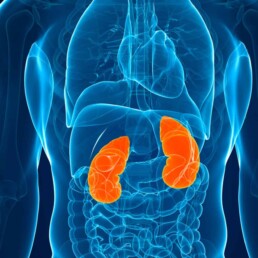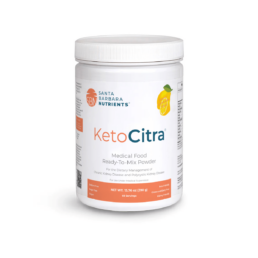Uric acid (UA) is often mentioned in discussions about kidney health, gout, and dietary habits. But what exactly is uric acid, and why does it matter? This post delves into the essence of uric acid and its implications on health. We will particularly focus on the association between uric acid and kidney disease (CKD).
By Majd Isreb, MD, FACP, FASN, IFMCP
Uric acid and kidney disease
What is Uric Acid?
Uric acid is a chemical created when the body breaks down substances known as purines, which are found in various foods and drinks. While it’s a normal part of the body’s processes, excessive uric acid can lead to health issues, including gout, kidney stones, and kidney disease.
Join us to end the kidney disease epidemic
The Connection Between Uric Acid and Chronic Kidney Disease
Research indicates that high uric acid levels can impair endothelial function by reducing nitric oxide levels. This condition, known as hyperuricemia, is linked with vascular diseases like CKD and cardiovascular disease (CVD). Surprisingly, 25% of CKD patients have gout and 60% exhibit hyperuricemia.
Uric Acid’s Role in the Rising Incidence of Chronic Kidney Disease
The intriguing relationship between uric acid and CKD has sparked considerable scientific inquiry. According to this review and meta-analysis of eighteen CKD incidence studies, higher uric acid levels were associated with increased CKD incidence. Another meta-analysis found that serum uric acid levels are an independent risk factor for CKD in middle-aged patients. This association was true in different subgroups, including diabetics and patients with elevated lipid levels.
How Uric Acid Affects Kidney Disease Progression
The relationship between uric acid levels and the progression of CKD is complex and still under extensive study. Notably, uric acid concentration is an independent risk factor for kidney failure in early-stage CKD and exhibits a J-shaped relationship with mortality rates in CKD patients.
The cells that line blood vessels are called endothelial cells. Endothelial cells tend to absorb serum uric acid, leading to a decrease in nitric oxide (NO) levels. This occurs as UA inhibits NO production and speeds up its breakdown. Additionally, xanthine oxidase (XO) found in the cytosol and plasma produces superoxide, further reducing NO levels. Consequently, hyperuricemia is linked to compromised endothelial function, which can lead to CKD.
This same mechanism can also lead to oxidative stress, which causes DNA damage, lipid and protein oxidation, cellular inflammation, and death. In fact, uric acid was found to trigger the activation of the immune system and modify the properties of kidney cells, including tubular epithelial cells, endothelial cells, and vascular smooth muscle cells, pushing them toward a state that promotes inflammation and fibrosis.
In short, high uric acid levels were associated with a faster decline in kidney function and rapid progression to kidney failure. The relationship between elevated uric acid and kidney disease is more complex though. We summarized it in the following infographic.
Chronic Kidney Disease and Uric acid
On the other hand, chronic kidney disease by itself can lead to elevated uric acid levels. There are two major causes for elevated uric acid levels in CKD:
- Decreased Renal Excretion: In CKD, the kidneys’ ability to filter and excrete waste products is compromised. Because uric acid is primarily eliminated through the kidneys, impaired kidney function can lead to its accumulation in the blood.
- Medication-induced Hyperuricemia: Certain medications, including diuretics (commonly used to treat hypertension and swelling in CKD patients), can reduce the kidneys’ ability to remove uric acid, leading to higher serum levels.
Uric Acid and Hypertension
Elevated serum uric acid levels have been implicated in the pathogenesis and evolution of hypertension. This relationship has been observed in both animal and human studies and is recognized as early as childhood and adolescence. Furthermore, treating hyperuricemia with a medication such as allopurinol was found to decrease both systolic and diastolic blood pressure in this meta-analysis.
Hyperuricemia is believed to increase blood pressure through several mechanisms. It was found that it increases renin expression and, therefore, activates the renin-angiotensin system. As mentioned above, hyperuricemia also inhibits endothelial nitric oxide, which can lead to blood vessel constriction. Elevated serum uric acid levels can also lead to salt-sensitive hypertension.
Studies on Uric Acid-Lowering Therapy in CKD
There’s evidence suggesting that uric acid-lowering therapy (ULT) could slow the progression of CKD. However, the effects vary with different ULT medications, and not all have shown beneficial outcomes in improving kidney function. For example, topiroxostat and febuxostat were found to slow the progression of CKD, while allopurinol and pegloticase were not. The effectiveness of ULT, including medications like topiroxostat and febuxostat, may vary, particularly among subgroups of CKD patients. So, the medication used to lower uric acid levels matters.
Fructose and uric acid
Fructose consumption plays a significant role in the metabolism of uric acid, establishing a notable link between dietary habits and uric acid levels. When fructose is ingested, it’s metabolized in the liver, where one of the byproducts is uric acid. This process can lead to increased levels of uric acid in the bloodstream, contributing to hyperuricemia.
Unlike glucose, which is utilized by cells throughout the body, fructose metabolism is more likely to spike uric acid production. This relationship underscores the impact of diet, particularly high-fructose foods and beverages like sodas and certain fruit juices, on uric acid levels and associated health conditions such as gout and kidney disease.
Understanding this connection is crucial for managing and preventing these conditions through dietary choices.
Natural Ways to Lower Uric Acid Levels
Managing uric acid levels can also be approached through dietary adjustments and lifestyle changes:
- Limiting Purine-rich Foods: Since purines can raise uric acid levels, reducing the intake of foods high in purines, such as certain meats, seafood, and sugary beverages, can be beneficial.
- Incorporating Low Purine Foods: Focusing on a diet that includes low-purine foods like fruits, vegetables, and low-fat dairy products can help manage uric acid levels.
- Avoid Certain Medications: Some medications, such as diuretics and aspirin, can increase uric acid levels. Before making any changes, consult with a healthcare provider.
- Maintaining a Moderate Weight: Obesity, especially visceral obesity, is linked to higher uric acid levels.
- Lifestyle Adjustments: Reducing alcohol intake, increasing fiber and vitamin C consumption, and eating cherries or tart cherry juice are among the suggested strategies to lower uric acid levels.
The Bottom Line
Elevated uric acid levels can lead to health issues such as gout, kidney stones, hypertension, and CKD incidence and progression. However, uric acid levels can be controlled and associated health risks mitigated through a combination of dietary management, lifestyle changes, and, where necessary, appropriate medical treatment.










